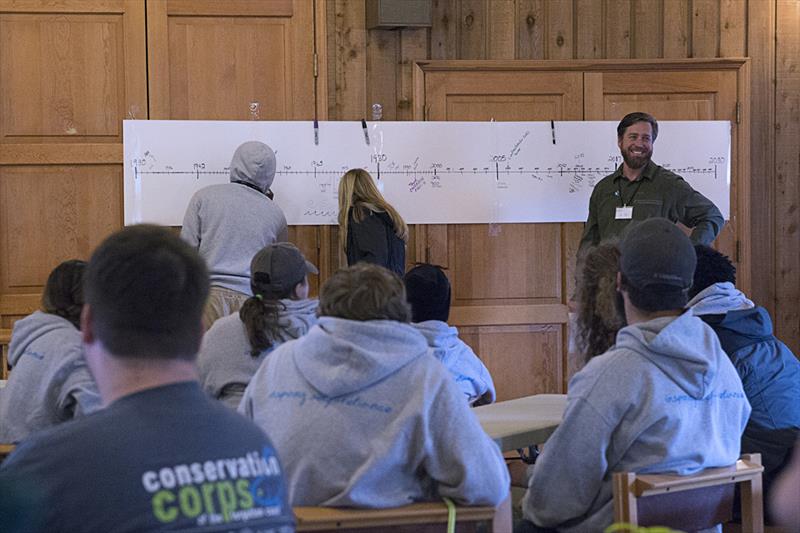
Florida A&M University offers STEM Scholarships to NOAA GulfCorps Program graduates
by NOAA Fisheries 12 Oct 2018 02:30 UTC

The first cohort of GulfCorps in the classroom during their orientation at Camp Beckwith, Alabama © Devin Ford / TNC
Florida A&M University, which leads the NOAA Center for Coastal and Marine Ecosystems, will provide two scholarships each year to expand GulfCorps graduates' opportunity to be a new generation of stewards for coastal environments, economies, and communities in the Gulf of Mexico.
NOAA's Offices of Habitat Conservation and Education announced an exciting, new initiative with partners at Florida A&M University. The school will now offer two scholarships each year to GulfCorps graduates in pursuit of science, technology, engineering, and math (STEM) undergraduate and graduate college degrees.
This development in the program supports the GulfCorps mission to restore habitat, and contribute to workforce development in Gulf of Mexico's coastal communities. Florida A&M is providing select GulfCorps graduates with a life-changing gift, and their academic pursuits will further training and skills gained in GulfCorps, providing more career opportunities in the restoration field.
Beyond on-the-ground environmental restoration, GulfCorps is creating awareness and interest within the local community, in hopes that participants will remain in the natural resources conservation field. In addition to the new scholarships, NOAA, The Nature Conservancy, and partners are educating participants and their communities about the financial growth and opportunities of the natural resources job sector.
The U.S. Bureau of Labor Statistics predicts STEM occupations will grow faster than average in the coming years (PDF, 11 pg), and provide higher than average wages. Meanwhile, unemployment among young people in the Gulf, especially some minorities, is higher than average. GulfCorps is working to bridge this gap to help young people find jobs, and education for jobs, that offer a positive future outlook for employment and wages.
NOAA and partners are proud to link GulfCorps graduates to job centers and leading universities that focus on training and educating a new generation of scientists, particularly from underrepresented minority communities.
Florida A&M University leads The NOAA Center for Coastal and Marine Ecosystems, a partnership with five other universities to address issues confronting coastal and marine communities. As a part of their mission, the Center provides scholarships to students pursuing STEM degrees and conducting research within one of three focus areas: Coastal Intelligence, Coastal Resilience, and Place-Based Conservation. The GulfCorps scholarships will be offered through this program.
GulfCorps is a conservation corps program, funded by the RESTORE Act, producing sustainable and lasting benefits to coastal environments, economies, and communities. The program recently finished it's first year of restoration and training activities, and is ready to kick off the second year with more participants contributing more restoration around the Gulf.